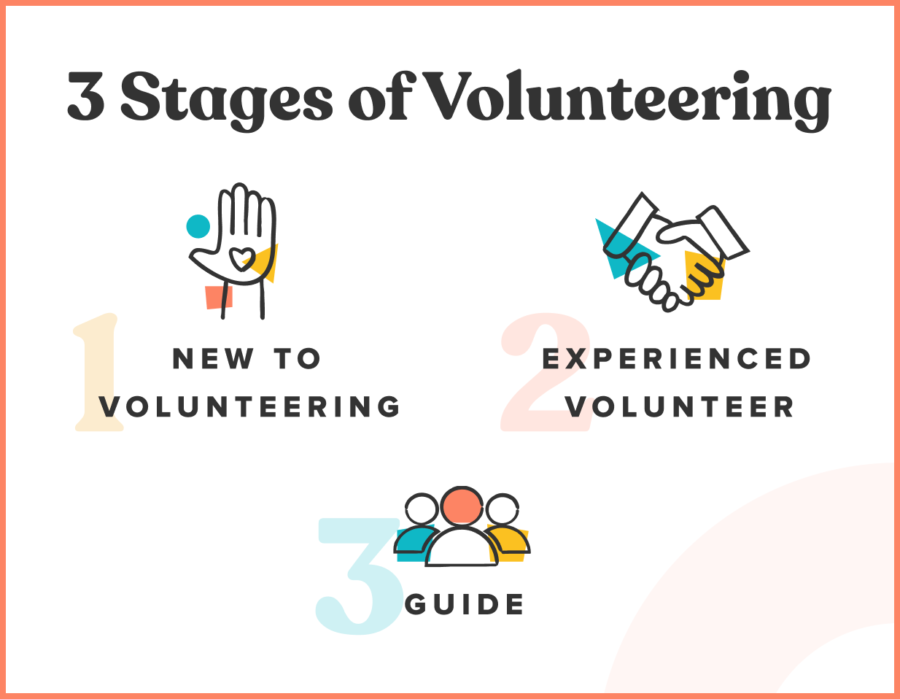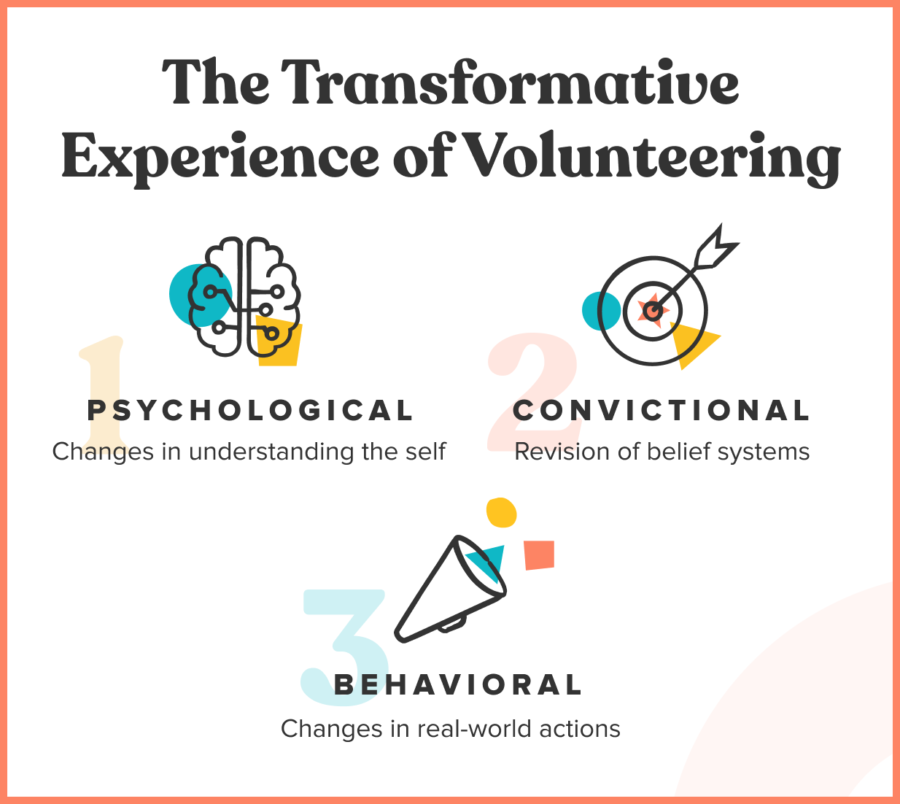Many corporate leaders are confronting a new landscape when it comes to hiring and retaining employees. It’s not just about dollar signs anymore–people want to work for organizations that are intentional about building a positive company culture and willing to invest in their communities.
Launching a corporate employee volunteer program is a great way to set your company apart. It allows you to tap into one of your best resources—people. A corporate volunteer program empowers employees to give back by creating opportunities for them to spend time helping nonprofits and charities dedicated to causes they care about.

But like any new initiative, creating a successful, lasting program requires a plan. We talked to Chris Jarvis, an expert on corporate volunteering and co-founder of Realized Worth. He shares some unique insights to help frame your approach.
Inspired by his advice, we’ve laid out the 7 strategies you need to get people engaged and the 7 steps to launch your program.
Let’s get started.
The benefits of corporate volunteer opportunities
Before we dig into the strategy of building your program, let’s pause to ask why it’s worth it in the first place. Not only will this help you understand the potential power of your investment, but it will help you make a case to your colleagues and leadership team.
The impact of volunteering moves in two directions. There’s the effect on the people or causes being served. But also, those who volunteer benefit as well. As Chris Jarvis explains: “There’s actually data to show the reward system of helping people when you can see their face and you understand the significance of the task—it is almost indistinguishable from the yoga high, the runner’s high, and sexual activity.”
The experience of volunteering can be incredibly meaningful. And that has a profound effect on how connected employees feel to their jobs and the company as a whole.
A good employee volunteer program can contribute to:
- Employee retention: When employees feel engaged in their work and connected to the company values, they tend to stick around.
- Productivity: Connecting to a meaningful purpose helps people bring their best selves to work and can boost their effectiveness.
- Recruiting: Potential employees are attracted to companies that invest in their communities and provide opportunities to give back on the job.
- A positive company culture: Incorporating a spirit of service and collaboration can have a profound effect on your workplace dynamics.
- Community impact: Putting your resources toward a community need can make a big difference in addressing society’s biggest challenges.
- Brand reputation: Consumers are looking to support companies that show up for their communities in meaningful ways.
- Leadership development: Volunteer projects give employees opportunities to try on different roles and develop new skills.
When it comes to facilitating a corporate volunteer program, it’s truly a virtuous cycle. Let’s move on to how to implement one effectively.

7 tips to increase participation
One of the big questions about corporate volunteer programs is: if you build it, will they come?
According to the latest Chief Executives for Corporate Purpose (CECP) report, employee volunteering participation has seen a steep drop. Of course there are some external factors at play (looking at you, COVID), but even before the pandemic, only 30% of employees were taking advantage of volunteering opportunities provided by their employers.
So that begs the question: how do you inspire people to get involved?
As you look to build or revamp your program, keep these 7 strategies in mind.
1. Provide paid time off to volunteer
This is a pretty easy one, but it’s important. Give employees dedicated time off to volunteer that they can use during regular working hours. If you set up a program, but then ask people to volunteer on their own time, you’re sending the message that your company is not willing to put resources toward this effort.
And don’t lump volunteer time in with PTO or sick leave. Create designated VTO (volunteer time off) and encourage everyone to use it.
2. Make it easy
Like any process, if you make it difficult or confusing to sign up for volunteer opportunities, people won’t do it. Make it as easy and simple as possible. Think of the sign-up process as part of the program itself. You want it to be a positive experience right from the start.
Using an employee giving software platform that allows each person to browse and sign up for opportunities, view and track their VTO, and get important information all in one place can help. No one wants to sort through spreadsheets or long email threads—don’t make them.
3. Eliminate the unknowns
Some people might be hesitant to volunteer because they haven’t done it in the past. You can help them get over this barrier by providing simple information up front.
People like to know what’s coming. Think of times you’ve been reluctant to say yes to something because you weren’t sure where exactly to go or who would be there. Make sure volunteers know what to wear, where they’ll be working, and if they need any special skills. This can make a big difference in helping people feel comfortable as they try something new.

4. Make it social
Corporate team volunteering is a great way to connect with teammates on another level. It’s also a good chance to work with new people—if you’re at a larger company, there are probably a lot of folks you don’t get to interact with directly. Volunteering can facilitate new and deeper relationships across your organization.
Choose a platform that allows employees to see who else will be volunteering with them so they can start forging those connections early. This also allows them to invite others and coordinate plans.

Jarvis explains that not all volunteers are alike. He breaks them down into three stages. “The first stage space is for individuals who don’t volunteer much and who end up volunteering because of an extrinsic reason,” he says. Social connections are a great external motivator. Building this into your program will help inexperienced volunteers take that first step.
From there, some volunteers will move onto the second stage of volunteering in which they’re motivation to give becomes intrinsic—they derive a deeper meaning from the work. In stage three, which only a small percentage of participants reach, volunteering becomes an integral part of someone’s identity. At this stage volunteers are considered guides; they can lead and inspire inexperienced individuals.

5. Consider behavioral science
In some ways getting people to volunteer is like getting them to exercise. People know volunteering makes them feel good, but still, finding motivation can be tricky.
A lot of Chris Jarvis’s work centers on how behavioral science comes into play. Behavioral science explores how people make decisions. Surprisingly, it isn’t always a matter of logic. Jarvis explains how this relates to employee engagement and volunteerism: “Most programs are not configured based on how people consider options, evaluate, and make decisions,” he says.
“Incorporating behavioral science is about taking advantage of the insights that we have around our cognitive biases—the shortcuts or heuristics we use to make decisions,” he says.
For example, Jarvis highlights the power of loss aversion bias. People don’t like to lose things. In fact, that aversion to loss is much stronger than the desire to make gains. How can this play into a corporate volunteer program? You can make VTO hours “use them or lose them”. Psychologically, this can help motivate people. Suddenly, they don’t want to lose the opportunity to volunteer and they feel a greater sense of urgency to get involved.
Tapping into behavioral science doesn’t require a big overhaul of your program. It’s about finding opportunities to align how your program is structured with how people actually perceive the world and make decisions.
Learn how to incorporate DEI values into your CSR work
Watch Submittable’s webinar with Grace Moss, Sophia Zeinu, and Yvette Urbina of WarnerMedia.
6. Keep the pressure off
Nothing can sour the joy of volunteering like making it mandatory. As much as you want employees to get involved, don’t apply intense pressure. In the end you want it to be their decision.
Rather than trying to force employees to participate, do your best to lower barriers that might prevent them from getting involved. For instance, you can ensure that opportunities are convenient—no one is likely to sign up for a shift that would force them to sit in rush hour traffic, for example.
Jarvis frames the approach around nudges, or subtle interventions that encourage employees to be more engaged in giving. In fact, he has recently launched Nudge the Good, an initiative that seeks to leverage behavioral science, neuroscience, and transformative learning theory to help improve results in corporate citizenship.
7. Incorporate virtual volunteering
Virtual volunteering has taken off over the last two years. Of course it can’t replace the experience of being in person, but including some opportunities to volunteer remotely will help engage more people. It’s a particularly good option for distributed teams.
Don’t skimp when it comes to planning these virtual events. You’re not just trying to check a box—you want everyone who participates to feel like the work they do has meaning.

7 steps to launch your program
1. Choose a cause
When it comes to choosing a focus for your volunteer program, you want employees to be involved. Too often an executive sets the priorities and the program begins to feel like a pet project for the boss—not a great model for getting people across the company excited and invested.
You can use an employee engagement platform to create a survey or a nomination process so that employees can weigh in on what causes matter to them and which organizations they want to support.
Maybe it makes sense to have some coordinated volunteer opportunities, but you may also consider letting employees choose when and where they volunteer. Perhaps they already have a relationship with an existing nonprofit and they want to use their VTO to continue that work. To take it a step further, perhaps you can empower employees to leverage their relationships with nonprofits to bring new opportunities to their coworkers.
Starting the volunteer experience with a sense of ownership and autonomy ensures that your employees will feel more engaged in the work.
2. Create a unique program
Although it might be worth taking some inspiration from other companies with volunteer programs, don’t just copy what someone else is doing.
You want to lean into your strengths. Craft your program strategy so that it aligns with your organization’s mission. Think about what inspires your team to do its best work and try to tap into that energy.
One way to leverage the unique skill sets of your employees is through skills-based volunteering. Your team can put their talents and expertise to work for nonprofit organizations. Not only can this provide deeper meaning and engagement, but it can help nonprofits address some of their critical needs.
Don’t be afraid to get creative and try new approaches. Across philanthropy there has been a reckoning around “best practices”. Sometimes processes have become so entrenched, organizations adopt them without interrogating whether they truly serve the mission at hand.
As Chris Jarvis puts it: “A square wheel was a best practice until someone invented a round one.”
3. Center the meaning
Part of the power of volunteering is the deep sense of meaning participants feel when they give back. Chris Jarvis explains it as “transformative experience” for volunteers “at a psychological level (changes in understanding the self), a convictional level (revision of belief systems), and behavioral (changes in real-world actions)”.

Be sure to keep this meaning at the center as you build your program. If employees feel like the company doesn’t care about the outcomes and is only trying to create good PR, they will be much less likely to participate.
Help volunteers connect with the meaning of the work. This can mean connecting them directly with the people who benefit. For example, instead of just packing boxes of food, can they help deliver food to people in need?
Roy Baumeister at Florida State University explains that people derive meaning from situations in three ways: when they see purpose and value in what they are doing, when they have a sense of personal efficacy and control, and when they feel a sense of self-worth.
Do everything you can to help participants get close to the meaning of the work.
4. Get leadership involved
When it comes to getting company leadership involved, it’s all about striking a balance. As mentioned earlier, you don’t want executives setting priorities and undercutting the sense of ownership employees feel. On the other hand, you don’t want the higher ups to seem disengaged or uninterested.
Organization leaders should be your program’s biggest cheerleaders. They should volunteer alongside employees so they understand the value of the work and can speak honestly about the experience.
Updates and information about volunteering should be included in company-wide communications. Leaders should champion these efforts in the same way they celebrate business wins. And the positivity needs to be genuine. Employees can easily recognize inauthenticity. If your leadership team isn’t truly invested in giving back, it will show.
Launch an employee volunteer program today
Submittable can help you give your employees a deeper sense of purpose and belonging.
5. Provide structure
Although you want employee enthusiasm to drive your program, your company needs to provide the logistical support and infrastructure.
Your CSR or HR team should work to build relationships with community partners so you can develop a deep understanding of the community’s needs. Establishing these partnerships gives your program legitimacy and will help employees understand the wider impact of their work.
Before you launch, you also want to choose a corporate volunteering platform that allows employees to view available opportunities, sign up easily, and track their VTO. Having this piece in place from the outset is essential. If employees’ first impression of the volunteer program is that it’s difficult or confusing to sort through, they’ll lose interest and it’ll be difficult to re-engage them.
One part of your plan should involve setting goals. Decide what outcomes matter most to you. You could set goals around participation rates, total VTO hours used, employee experience, or community impact. Don’t get bogged down by trying to track too many metrics—choose a couple aspects you want to focus on and use your employee volunteer management software to track your progress.
6. Take stock
A lot of energy and excitement can go into launching a volunteer program. That’s great. Initial enthusiasm is important to get everyone on board. But creating a successful program that lasts is all about continuing to cultivate what you’ve built.
First of all, you want to take stock of what your program achieves. Are you reaching the goals you set? Are you seeing the engagement and impact you want to see? Share your findings with employees and the public. This transparency will show that you’re willing to show up authentically and honestly.
Make it a practice to seek feedback from employees about their experience. Use their insight to refine or reshape your approach.
You also want to continue to develop your program. Maybe you seek out additional community partners or add new volunteer opportunities over time. Or perhaps you find fresh ways to celebrate participation. What’s important is keeping the program relevant and active–if it starts to feel stale to employees, interest will wane.
7. Make volunteering part of your company culture
You want to integrate the spirit of giving and stewardship into your company culture. The last thing you want is to create a volunteer program that feels at odds with or separate from how you do business.
People from all across the company and all departments should be engaged. For example, if only folks from HR are showing up, you want to figure out why. Are some managers not supportive of employees taking time to volunteer? Is messaging around the program not reaching everyone?
Celebrate the successes of your program both internally and externally. Become a brand people associate with giving. This also means you need to look at how your business operates more broadly. If you’re creating volunteer opportunities to address problems you’re helping to perpetuate, people will be quick to point out the hypocrisy.
Look at your business practices. Are there more ways you can consider the social impact of your work? Sometimes a volunteer program is just the start.
Find the right partners to support your work
As you look to build or reshape your corporate volunteer program, you want to leverage tools that will simplify the process and increase engagement. Submittable is a CSR software built to help you launch, manage, and measure your CSR programs. Find out more.